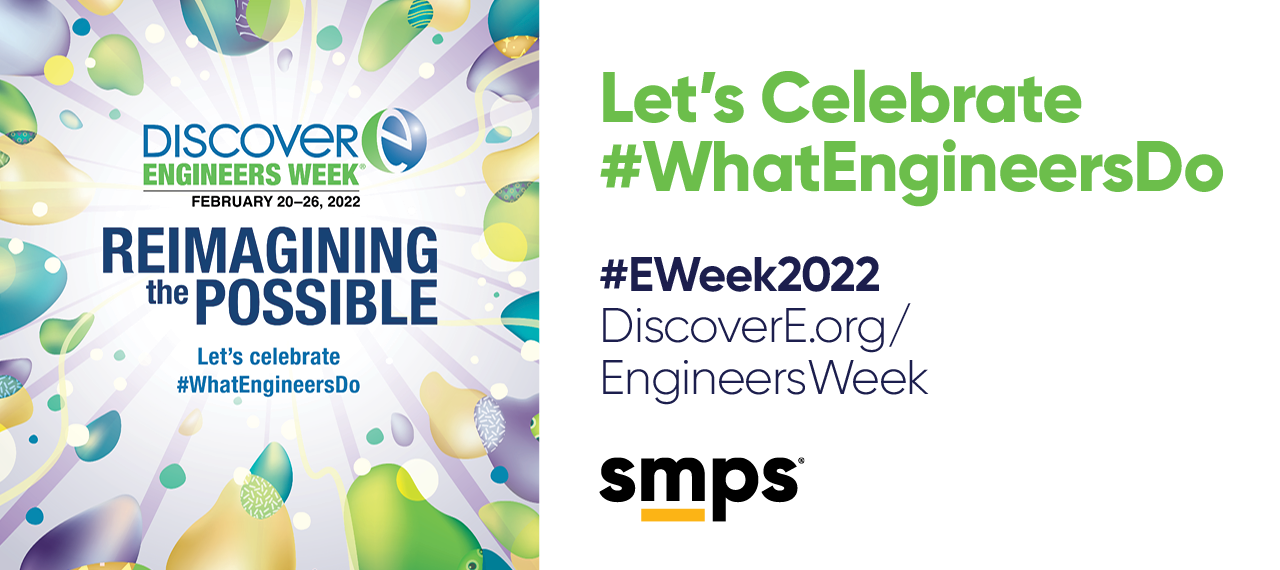
Russ Sanford, FSMPS, CPSM, is a civil engineer by education, and a business leader by choice. He has executive management experience with professional service firms in the A/E/C arena. As senior vice president and chief growth officer, Russ provides overarching strategy, leadership, and management of the marketing, business development, and proposal efforts to achieve year-on-year growth at Kleinschmidt Associates, an engineering and environmental consulting firm with 12 offices in North America and over 220 staff. Right before National Engineers Week, Russ took time out of his busy schedule to chat with SMPS HQ.
Russ, you started your career as a civil engineer. why did you choose that degree? In high school, math and science were easy subjects for me, and a counselor suggested that engineers were good in those subjects. I also expressed an interest in being outdoors and the environment, so she suggested I look into becoming a civil engineer with an environmental emphasis. Today, I still have the same passions, which is why I choose to work for a firm that focuses on renewable energy and environmental restoration projects.
Why or how did you make the transition to a marketing/business development position? My first job after college was working with a geotechnical, environmental, and material testing firm in Milwaukee, WI. During my second year when work slowed in the winter, my supervisor asked me to make some phone calls to current clients and potential clients and to take them out to breakfast or lunch. My response was, “Really? And you’ll pay for the meal? That sounds great! “This is when I first realized I had a strong interest in developing relationships, identifying project opportunities, and winning work. I expressed an interest in pursuing a full-time business development role, but the company was not ready, and I ended up leaving.
How did your engineering degree impact your ability to be successful at business development? Engineers (and scientist) are good at creating and following processes. That’s what they do; that’s how they solve complex problems. Success in marketing, business development, and proposals also comes from developing and following processes. That’s the reason that SMPS created the MARKENDIUM; it’s the guidebook for all the processes SMPS members need to be successful in their careers. A person certainly does not need to be an engineer to be a process person, but it does help to understand that most of our technical professionals (including architects) think this way. It helped me more once I began educating technical staff on business development because I could lay out the specific process that they needed to follow to be successful at BD.
Since you didn’t study marketing or business in college, where did you learn how to do marketing and business development? I love to learn. I don’t necessarily like to be taught and I have no desire for additional formal education, but I do love to learn. In the early 2000’s during my first full-time business development position in the A/EC/ industries, someone suggested I join SMPS. I had no idea what it was, but the folks at SMPS Greater Cincinnati were very open to helping each other succeed. I really needed the trainings that the Education Committee put together on how to do business development.
I also had a few great mentors throughout the years. One was my supervisor when I was in commercial real estate development. Steve Wathen taught me professional sales training he had learned from outside the industry—training that Fortune 500 companies utilize. And I love to read books and articles to understand how to be more successful at whatever I’m doing. I’ve applied the same philosophy to learning leadership skills.
How did you make the transition from being a business development person to a chief marketing officer, and now chief growth officer? The transition was made for me! In 2009 in the middle of the great recession, there was little need for a real-estate developer to have a full-time business developer. I was granted the opportunity to reassess my career and figure out what I wanted to do with the rest of my life. I received a call from the CEO of an architectural firm who wanted to talk to me about becoming his CMO. The CEO explained that he was looking for someone to focus on strategy, coaching, and metrics. I realized that these are the areas that I’m really passionate about (and that our industry typically overlooks when it comes to BD). I still use these three categories to explain what I do.
Since you mentioned leadership, what would you suggest for someone that’s interested in elevating their position? I’m not an executive because I’m an engineer. I’m an executive because I developed leadership skills over time and learned what technical professionals in leadership roles care about—and that’s numbers. If you don’t have data to explain how well (or poor) your program is doing, no one will listen. You need to have the data to advocate for a change that may need to be implemented so that you get senior leadership support. A good example is implementing a go no-go process to stop your firm from being a proposal production facility with poor hit rates. You need to present data on the actual hit rates and capture rates (dollar value) and the proposal expenses to get the attention of senior leaders.
I also recommend Steven Covey’s Urgent Important Matrix. Study it, understand it, master it. Way too many people are stuck in the urgent and don’t know how to escape. You have to make time to work on the important! That’s what will transform your career and your company.
You’ve earned your CPSM and are an SMPS Fellow. Tell us about that. It’s a great honor! I never really thought about becoming a CPSM or a Fellow. The reason I decided to pursue my CPSM designation is because I wanted the education that came from studying for the exam. I knew that I had little understanding about marketing strategy, planning, and proposals because most of my career was devoted to business development. Studying for the CPSM exam helped me round out my education and helped prepare me to become a CMO/CGO.
Applying to become an SMPS Fellow was different because it’s not about what you know, it’s about what you’ve done to help support the industry and SMPS. I’ve tried to give back a lot because I’m so grateful for all the people that came before me and helped me become successful in my career. As a technically trained person, I have a special affinity for engineers and architects who know nothing about BD but are asked to do it. That’s why I invest a lot of my time training doer-sellers and through volunteer service at the chapter, regional, and Society levels.
Russ Sanford, FSMPS, CPSM, can be reached at Russ.Sanford@KleinschmidtGroup.com.







